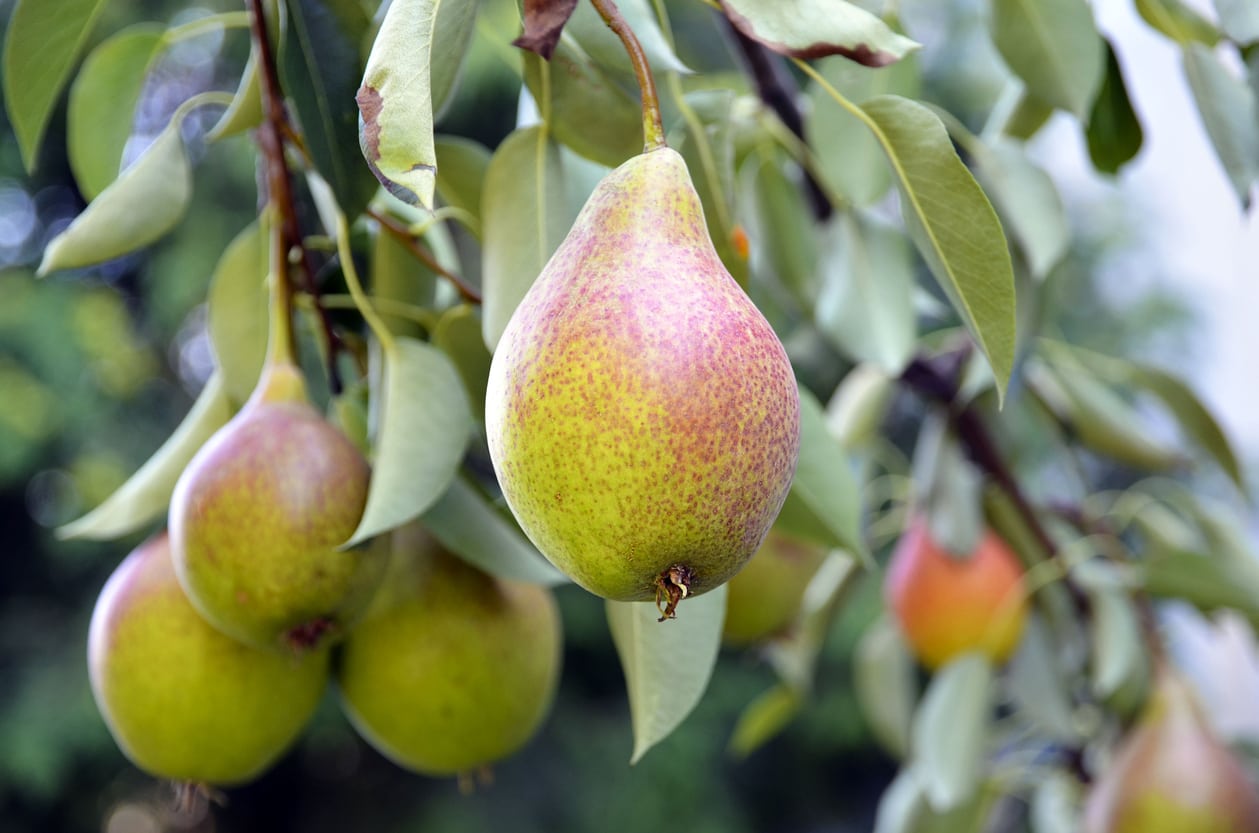Pear Trees And Cold: Learn About Pear Chill Hours For Fruiting


Most fruit trees require a chilling period. This is referred to as chilling hours and varies by species. Pear chill hours for fruiting must be met or the plant will not bud and flower. This makes it important to select trees with chill hours that reflect your zone. The minimum pear chill hours should be reflected on the plant tag along with its hardiness zone. The two pieces of information are very different but important if you want a healthy bearing pear tree.
Pear Trees and Cold Exposure
Chilling hours tell you how long cold temperatures last on average. This is much different from the USDA hardiness zone, which indicates the average annual minimum winter temperature of a region. Why are chilling hours important? Without enough chill hours for pear trees, plants won't break dormancy, resulting in no flowers, few flowers, or incomplete flowers. All this means a no to low fruit harvest. Your hardiness zone will simply tell you the average temperature in winter. There are cold hardy pears for zone 4 and those that prefer warmer zone 8 temperatures. This is useful if the plant is going to withstand extreme cold temperatures in winter. It does not refer to the chill hours for pear trees. This is a separate number that tells you if the temperature is low enough in winter to break dormancy. Fruit and nut tree chilling requirements indicate the number of hours a tree will be exposed to temperatures of under 45 degrees Fahrenheit (7 C.). If the tree does not experience cold temperatures equal to its chill hour range, not only will it fail to fruit, but even leaf production is compromised.
What are Pear Chilling Requirements?
The minimum pear chill hours are between 200 and 800. The actual number will vary by variety and zone preference. There are even some varieties that require more than 1,000 chill hours. Planting a tree that has higher chill hours than experienced results in lack of production. Since we plant fruit trees for the fruit, it becomes an important selection indicator. There are low chill trees for warmer regions and high chill for colder gardens. This allows gardeners in different zones to select not only the right zonal variety but also one that will receive enough time in cool temperatures to break down growth inhibitors in flower and leaf buds. Some of the most popular pear trees recently are the Asian pear variety. These typically have low chill hours of around 400 to 500. Examples of these are:
- Niitaka
- Shinko
- Kosui
- Atago
Varieties of European trees with low pear chill hours for fruiting might be:
- Comice
- Kieffer
- Corella
Plants with high chill hour needs are perfect for most northern gardeners. Just make sure the hardiness matches up with the average minimum temperatures you will receive. You can take some precautions in cold regions by planting in sheltered locations and mulching around the root zone. High chill specimens are:
- Anjou
- Bosc
- Red Bartlett
- Moonglow
- Potomac
Sign up for the Gardening Know How newsletter today and receive a free copy of our e-book "How to Grow Delicious Tomatoes".

Bonnie Grant is a professional landscaper with a Certification in Urban Gardening. She has been gardening and writing for 15 years. A former professional chef, she has a passion for edible landscaping.